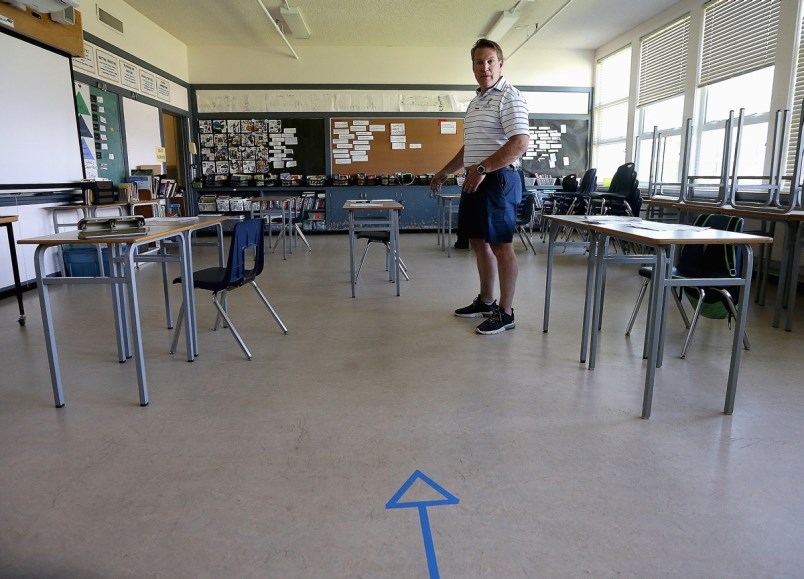“Not everything that can be counted counts, and not everything that counts can be counted”.
I did not write that but I wish I had because it sums up, in a very succinct few words, the essential complexities of measuring and then representing student progress.
That problem will be further exacerbated when students return to school after the shutdown.
Some students will have had the benefit of upgraded access to learning technology, private tutors even parents who themselves are professional teachers. Other students will have had none of that and so the gap between those ready to return and those not ready will be wider than ever.
So, how will teachers decide how to deal with a class which arrives back at school in widely dispersed educational disarray?
How will one student’s readiness to return to classes be measured against another’s?
It will not be through standardized tests and the categorizing of students through the one-shot results of those tests and the representation of those results through letter grades or percentages.
To begin with, and in the interests of full disclosure, I should admit that I am no fan of letter grades as indicators of student performance or readiness to move ahead with learning or anything else about how kids learn.
Nor was I, as a teacher, ever impressed by a parent who said “don’t give me all that edu-babble about my kid - just give me the bottom line, A,B,C or whatever”.
I was tempted to ask the parent “are you an A, B, C or D as a parent”.
Had my cardiologist reduced the complexities of my health status to a letter grade or the results of a single stress test etc. to an A, B, C (or my case “L” for lazy) without further information, prescription or lifestyle advice, I’d be looking for a better cardiologist.
In that same way I’ve never understood how a process as mysterious and complex as learning could be represented by a letter grade or, for that matter a single test result or why anybody would be satisfied with that informational austerity.
Again, if a hospital’s “performance” was reduced to “infection rates, 30-day average mortality rates, re-admissions after surgery, etc.” that certainly removes any thought of professional judgement about patient care decisions.
That’s not to deny the value of some empirical information as a contributing measure of performance in any organization but that kind of information taken alone can be a tempting “sine qua non” which too often leads bureaucrats and politicians down the road to poorly thought out decisions just to bump up the numbers about schools and education generally in the absence of the judgement of professionals .
A misguided dependence on standardized test results has served nobody well, not in schools and certainly not in handling the Pandemic in the U.S.
As a teacher I always considered it my responsibility to understand each student in more comprehensive ways that a test result might indicate. Did I make mistakes in judgement? Of course I did but not often and fewer times again as I learnt more about the broader responsibilities of my profession.
A balanced model of student assessment includes a variety of measures with a variety of purposes, including generally accepted performance standards, classroom revision tests, portfolios in which kids express their understanding of the topic in different ways and individual student assessment which takes into account individual differences about ways of learning.
That means that for the first few weeks back at school there will be a lot of homework - for teachers who will be gathering information from a variety of sources to enable informed decisions about where to go next with individual students, way beyond A,B,C,D,I (incomplete) or F (not ready yet).
Individual students will need to be assessed to detect learning disabilities, reading difficulties, language deficiency, and giftedness.
Happily some districts are moving away from letter grades if only because it implies a understanding that the true purpose of student assessment is or should be for learning not of learning.
As Einstein suggested current problems will not be resolved using the same processes that had created them in the first place.
When schools eventually reopen fully, no matter how long and with what missteps along the way, the notion that every student is learning and achieving in lockstep with every other student will be an invalid assumption - but then it always has been despite how we organize public education and assessment procedures designed to reduce measurement of each individual’s learning progress to an absurd simplicity.
Geoff Johnson is a former superintendent of schools.



